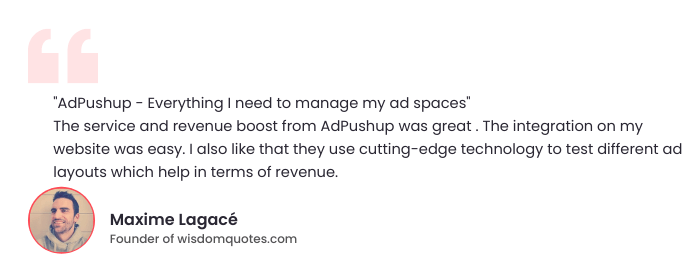2017 was a rough year for the digital publishing industry. As large-scale ad fraud, growing popularity of ad blockers, and new ad viewability standards created trouble, declining ad revenues, company shutdowns and industry-wide layoffs followed.
While those problems are still far from over and web publishers continue to grapple with them, the new year brings a new set of challenges and opportunities. Here’s a quick rundown of the most important things web publishers need to know about going into this year.
The Facebook News Feed is Changing (Again)
Social traffic accounts for a sizeable chunk of an average publisher’s monthly pageviews. Many big publishers rely on Facebook for content distribution as their audience on the platform often runs into millions of users. For smaller publishers, Facebook can be an inexpensive way to build that audience. This free ride is about to come to a screeching halt, however, as Mark Zuckerberg recently revealed Facebook’s plans to de-prioritize posts from businesses, brands, and media.
This is all in a bid for making Facebook a better platform for users.
Research shows that when we use social media to connect with people we care about, it can be good for our well-being. We can feel more connected and less lonely, and that correlates with long term measures of happiness and health. On the other hand, passively reading articles or watching videos—even if they’re entertaining or informative—may not be as good.
The design changes have already started rolling out.
…you’ll see less public content like posts from businesses, brands, and media. And the public content you see more will be held to the same standard — it should encourage meaningful interactions between people.
Will this change provide a better experience to users? Probably. But it’s worrying news for publishers because on top of all the challenges the industry is already facing, shrinking social traffic is now going to be another one. Facebook stands to gain from the move as brands and successful publishers may actually increase the ad spend on the platform in an attempt to maintain visibility.
GDPR Comes Into Effect This Year
On May 25th this year, the new EU regulatory framework that governs how companies handle the user data of EU residents will come into effect—the thing to note here is that General Data Protection Regulation (GDPR) does not only apply to companies based in Europe, but rather any company that collects, processes and stores information of people residing in the region.
Since most publishers, ad networks, ad exchanges, and even consumer brands rely on user data for their day-to-day operations to work, all of them come under the purview of the regulation.
The EU Commission sums up the goal of GDPR:
The objective of this new set of rules is to give citizens back control over of their personal data, and to simplify the regulatory environment for business. The data protection reform is a key enabler of the Digital Single Market which the Commission has prioritised. The reform will allow European citizens and businesses to fully benefit from the digital economy.
Even though the initial announcement for GDPR was made two years ago, companies are still scrambling to understand the ramifications of the regulation coming into effect. The confusion over compliance coupled with the heavy regime of fines has led to a cottage industry of “GDPR consultants”.
One of the cornerstones of GDPR is “informed consent”, meaning that from collection to processing to storage—at every step—users must be fully informed of the data being stored, for what use, and for how long. This guide on Diginomica tries to debunk some of the misnomers around the regulation.
The Growth of Subscriptions and Micro-payments
As staying profitable has become an increasingly difficult endeavor for web publishers over the years, many have experimented with revenue-generating strategies outside of advertising. One such strategy is to offer users a subscription much like a print magazine or newspaper would.
This is done by setting up a paywall—and unlike print—web publishers have more freedom to define the subscription models, most publishers offer different tiers of content access based on the subscription amount a reader is willing to pay.
Has this worked? Well, yes: The New York Times recently announced that it now has more than 3.5 million subscribers in addition to their casual readership, as you may imagine, the subscriptions alone are now a significant driver of revenue for the publication.
Of course, a caveat here is that most users will be inclined to subscribe if a publishing brand produces content that is unique and valuable enough to justify the cost of the subscription. Also, publishers with an established and sizeable audience stand to profit more from running a subscription model because of economy of scale. Smaller publishers will need to look elsewhere while they build up that audience.
Despite its success, subscription can be a hard sell, requiring users from spending nothing to spending a whole lot in one step. Another hurdle is explained by Arrow’s information paradox, which in the context of publishing roughly translates as follows.
…a consumer will not pay for information or knowledge without knowing what it is, but that same consumer has no reason to pay for it once she knows what she’s getting. After you’ve consumed that information, the value of the information is zero because you’ve consumed it.
To counter these challenges, micro-payments show some promise. Startups such as Inkl, Blendle, and LaterPay work with publishers to allow conditional access to content with users paying a small amount for it, for instance, a user could read an article they’re interested in for 25 cents instead of buying a 20 dollar subscription. Besides generating an alternate revenue stream, micro-payments are also used as a means to upsell full subscriptions to users who demonstrate interest in a publication.

Pivot to Video Has Failed
Remember pivot to video? The industry fad where lured by the engagement rates and moneymaking power of video, publishers laid off writers en masse and doubled down on video production?
Well, that hasn’t turned out so well for anyone.
As Columbia Journalism Review reports:
Hundreds of journalists have lost their jobs while shiny-object-chasing publishers are no closer to creating cohesive video strategies to replace the traffic those writers were producing. Publishers who pivoted to video have forfeited the majority of their hard-won native audiences in only a year of churning out undifferentiated, bland chunks of largely aggregated “snackable” video.
Digiday called it the “pivot to declining pageviews”:
According to data from comScore, the publishers that pivoted to video this summer have seen at least a 60 percent drop in their traffic in August compared to the same period from a year ago.
So, what happens now? First, publishers need to be judicious with the money they spend on video production this year, given the audience shrinkage caused by pivoting to video, and also how Facebook is planning to make the news feed less focussed on “content” and more focussed on users.
In addition to written content, there’s also been a push towards audio, with publishers such as The New York Times and The Atlantic now giving users the option to “listen” to digital stories. Given the popularity of podcasts and the emergence of smart audio devices such as Amazon Alexa and Apple HomePod, pivoting to audio may just prove to be one the better revenue-generating ideas of recent years.
Brand Safety and New Ad Spend Patterns
In March last year, brands such as AT&T and Verizon (and many others) stopped running their campaigns on YouTube after they learnt that their ads were being displayed in videos promoting terrorism. While Google was swift in its response and YouTube had most of its advertisers back within a few months, advertisers and brands, previously only concerned with who is seeing is their ads, have now expanded their focus on where the ads are being served.
Between then and now—from internal meetings to media watchdogs to industry conferences—brand safety has become one of the most hotly debated topics within advertising circles.
Programmatic advertising took the blame for the entire mess because advertisers know it’s impossible to know exactly what they’re buying into when they buy via programmatic channels. As an aftermath of this, ad dollars are being directed away from programmatic and into direct sales.
There is a virtual absence of trust in blind programmatic and user-generated content, which can’t be controlled. We expected the market to move this way, and it can’t happen fast enough.
— Jason Kint, CEO, Digital Content Next
This is an opportunity for publishers to step up the quality control on their content and present themselves as a brand safe property, every publisher media kit in 2018 should focus on conveying this. That, and ramping up the efforts on diversifying ad sale channels other than programmatic, whether that’s striking direct deals with advertisers and brands or selling inventory on private marketplaces.

Shubham is a digital marketer with rich experience working in the advertisement technology industry. He has vast experience in the programmatic industry, driving business strategy and scaling functions including but not limited to growth and marketing, Operations, process optimization, and Sales.







